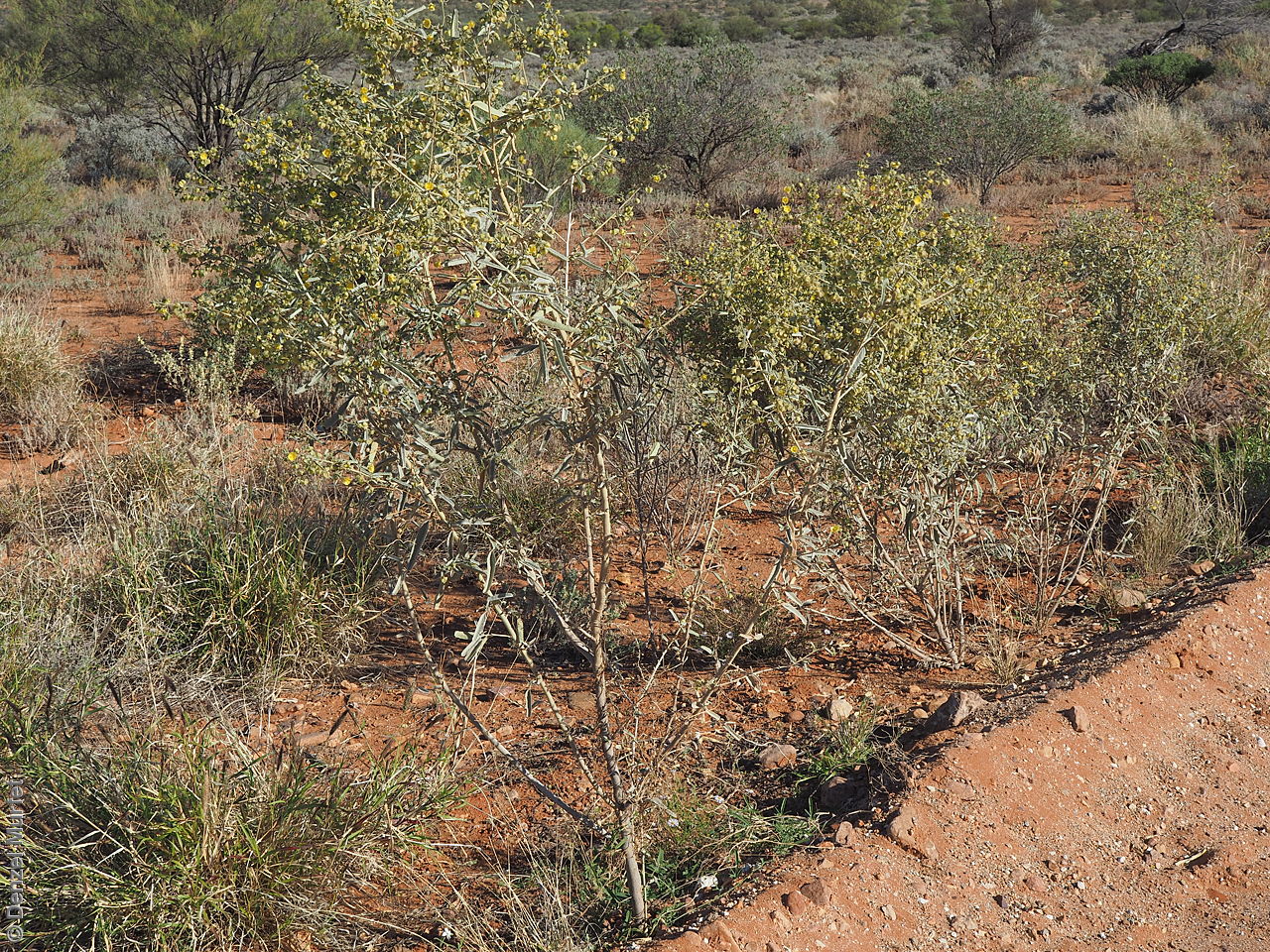
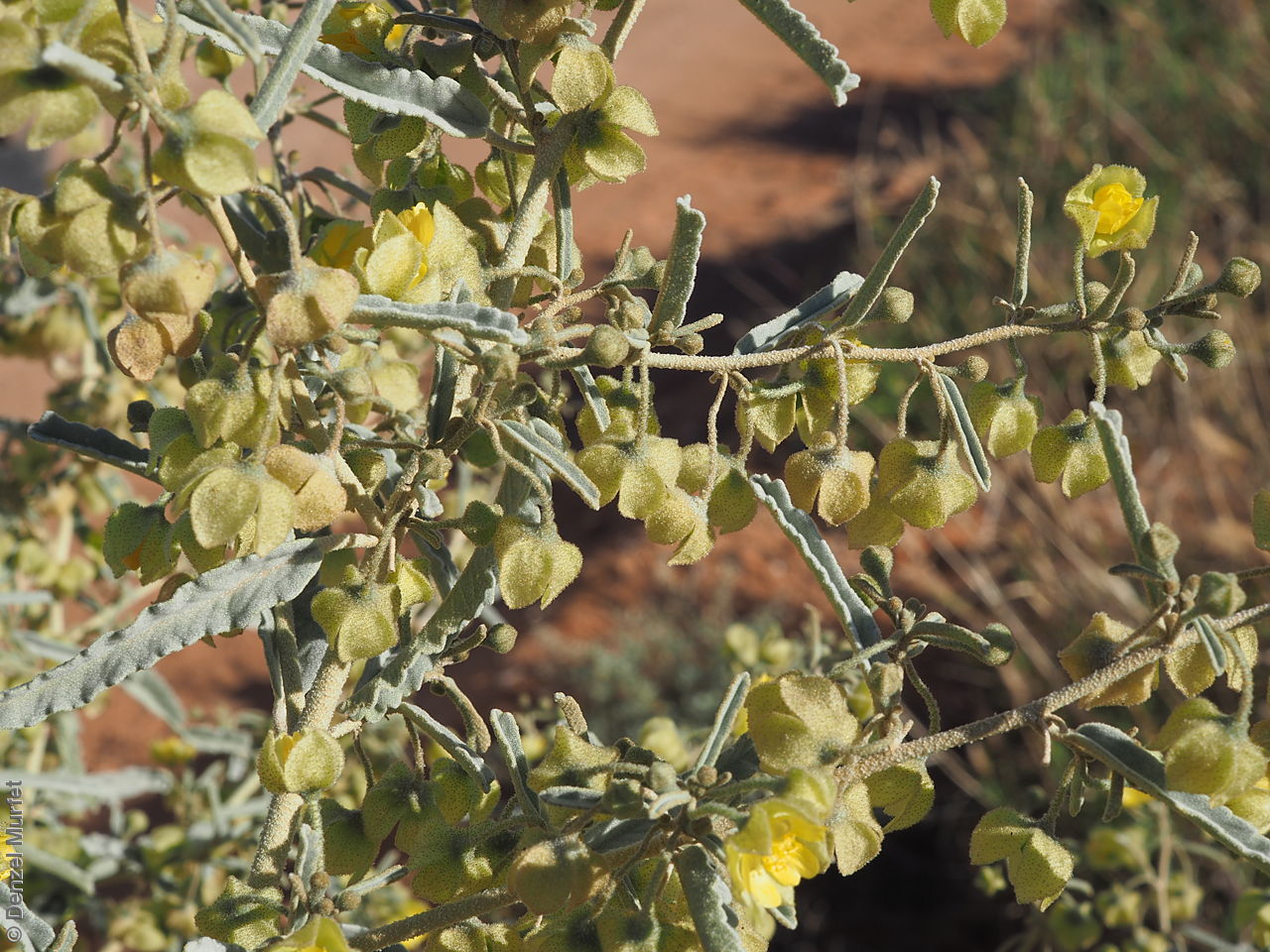
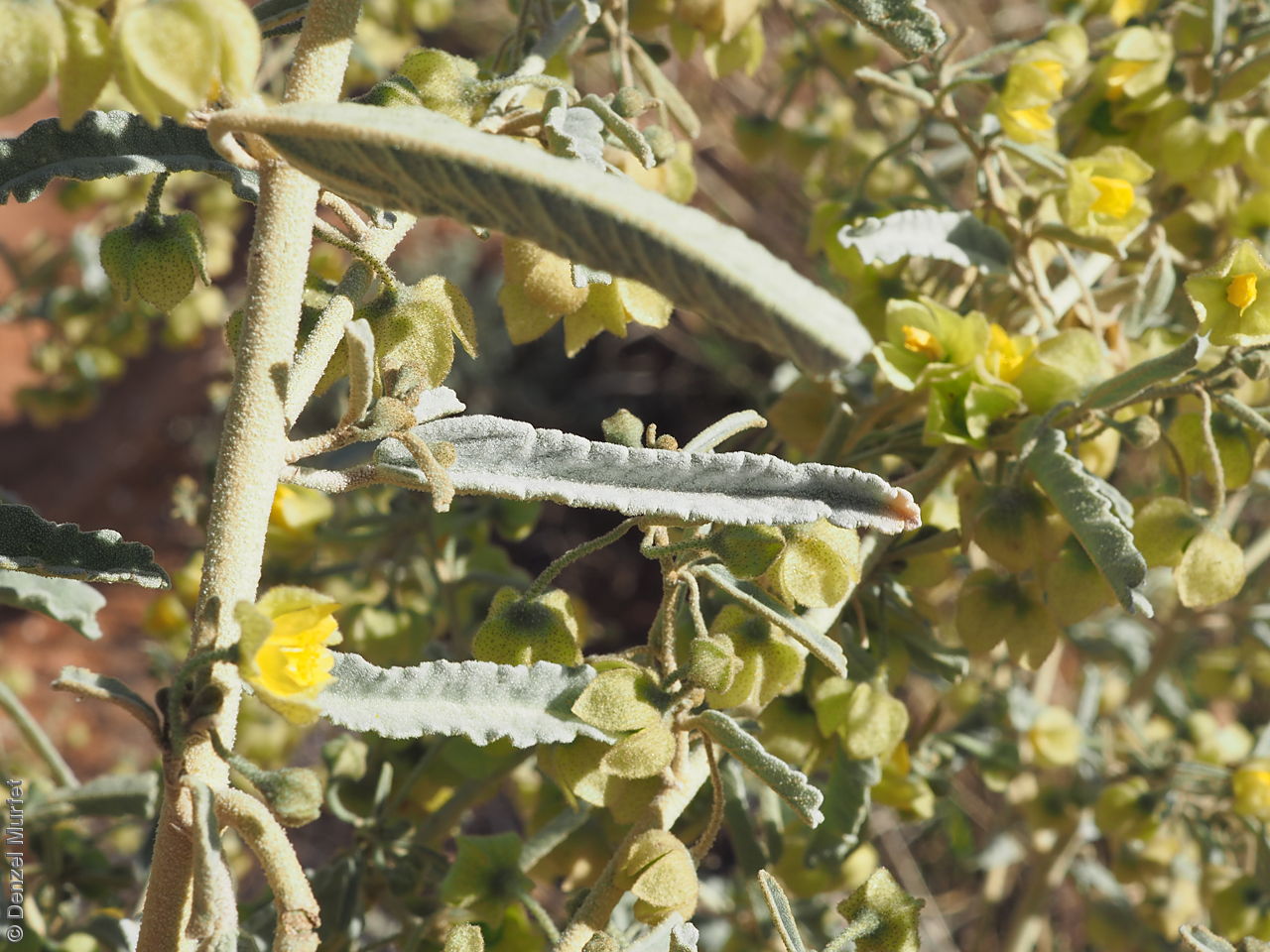
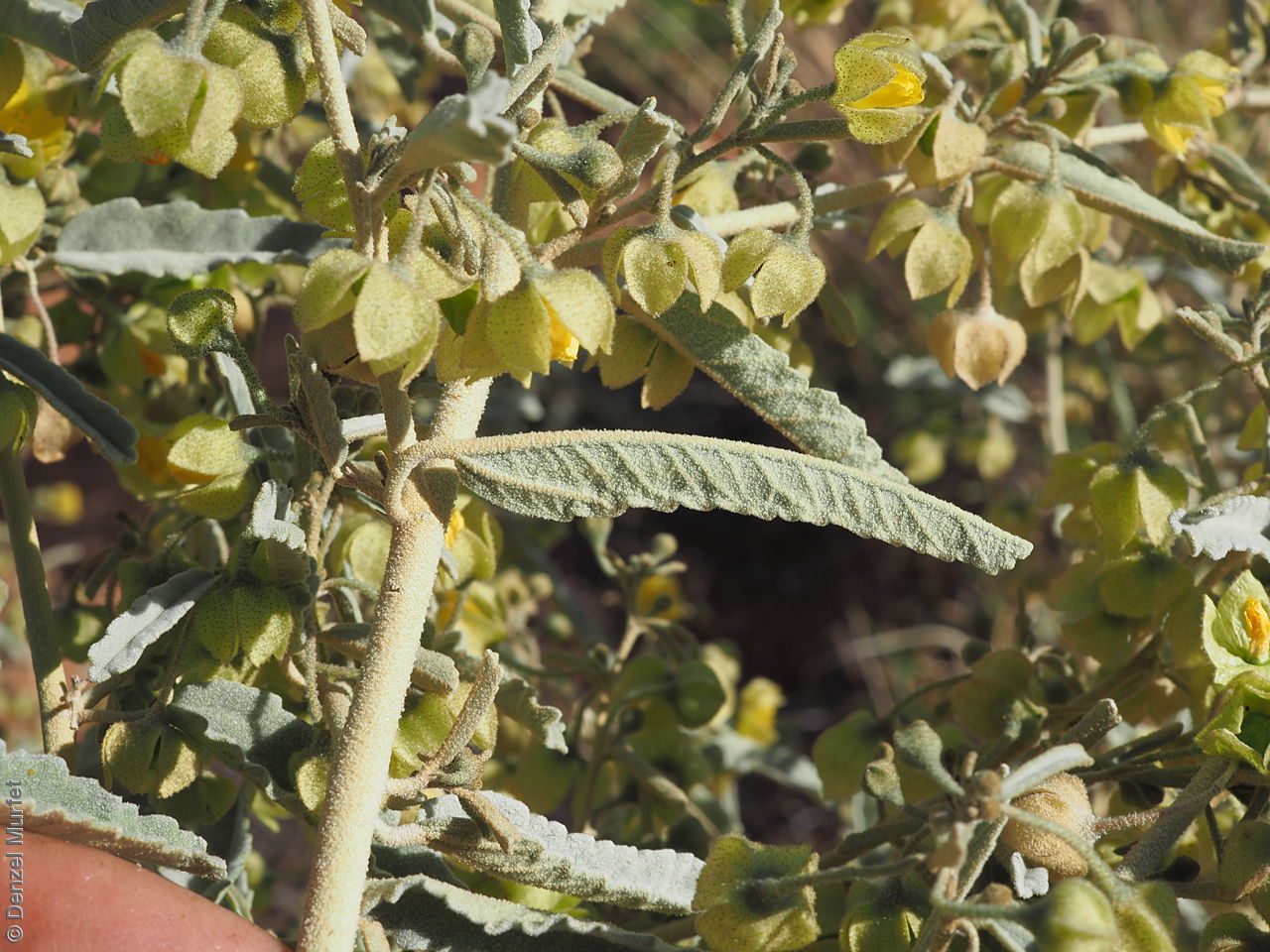
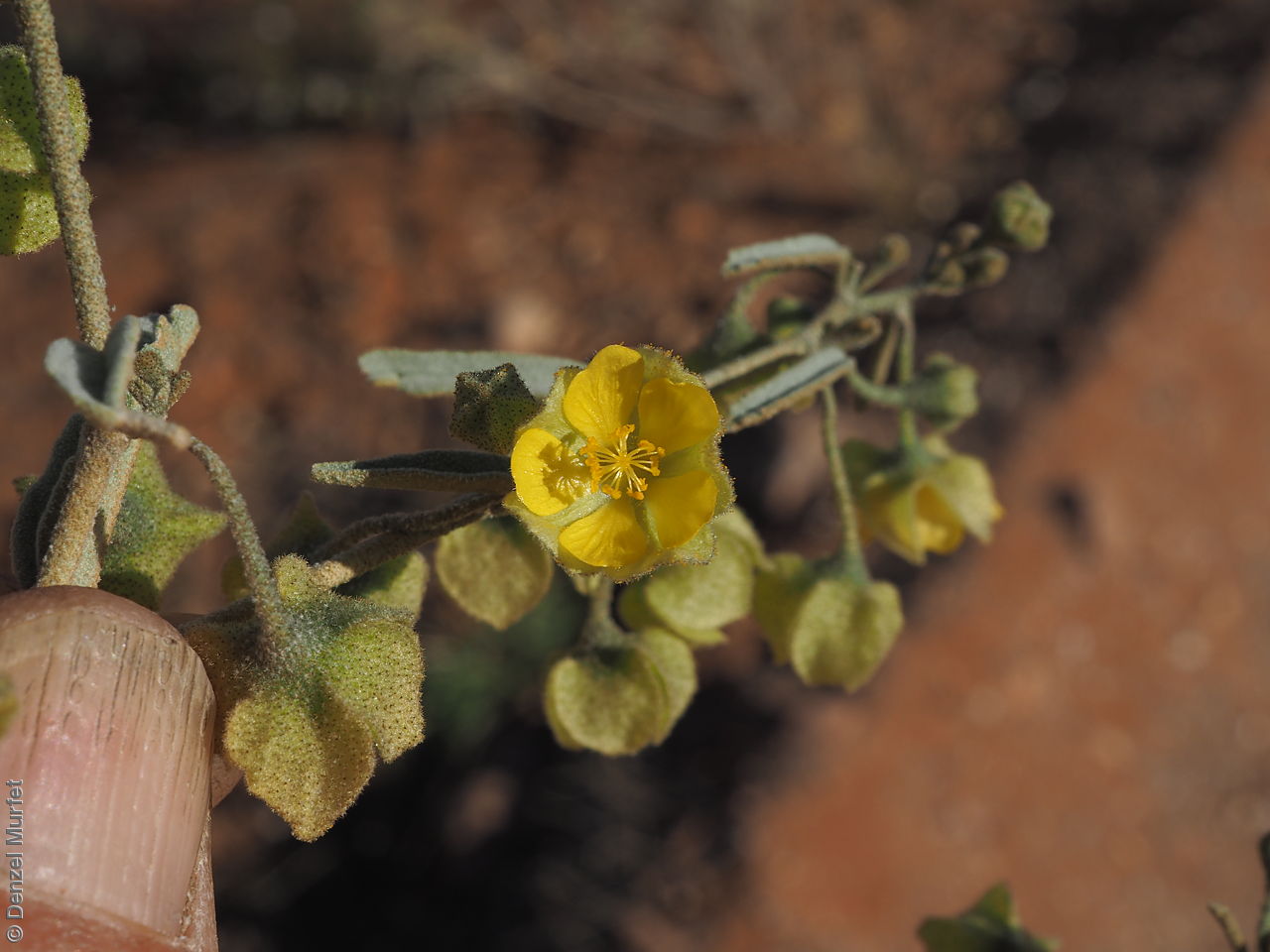
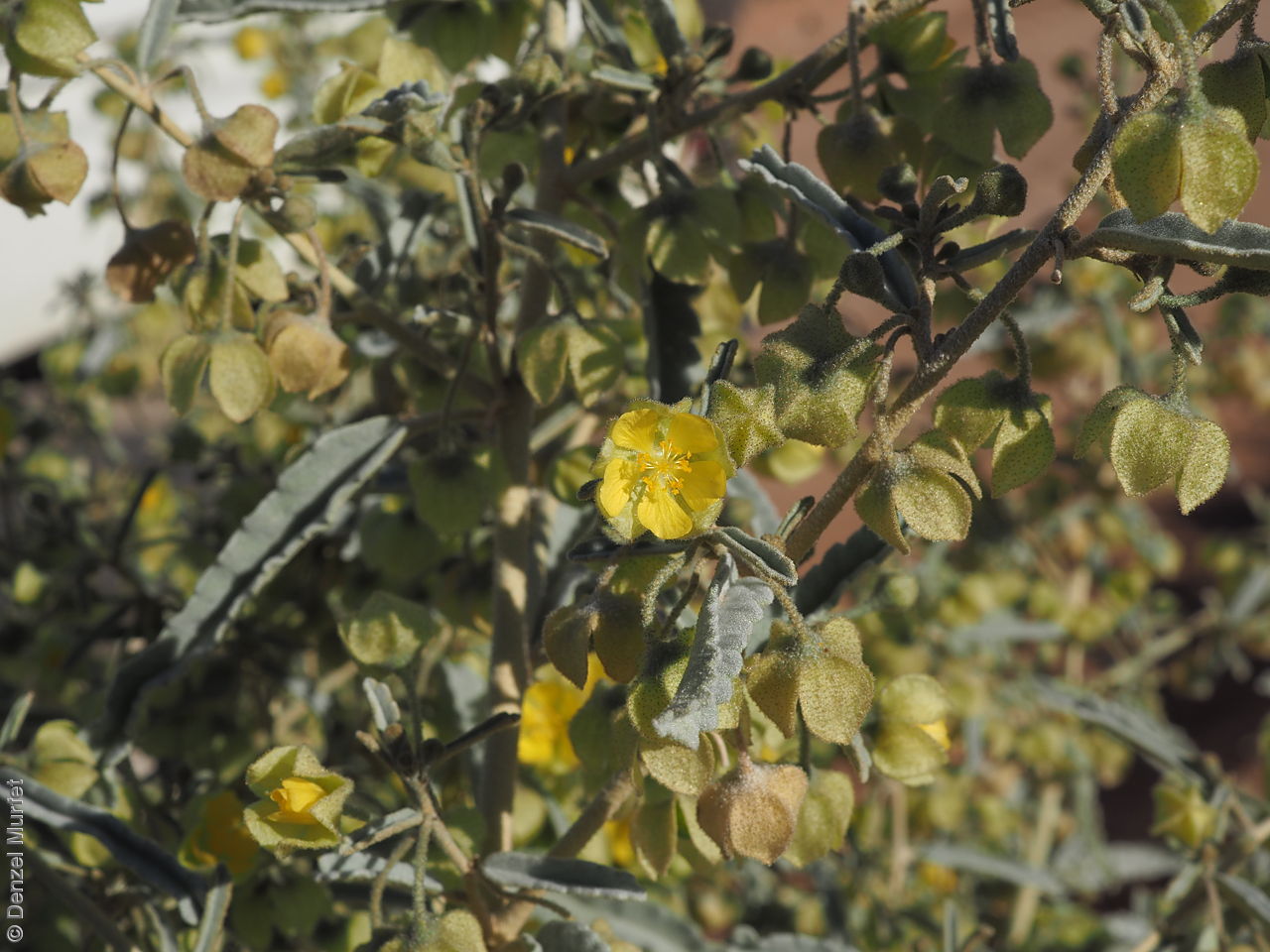
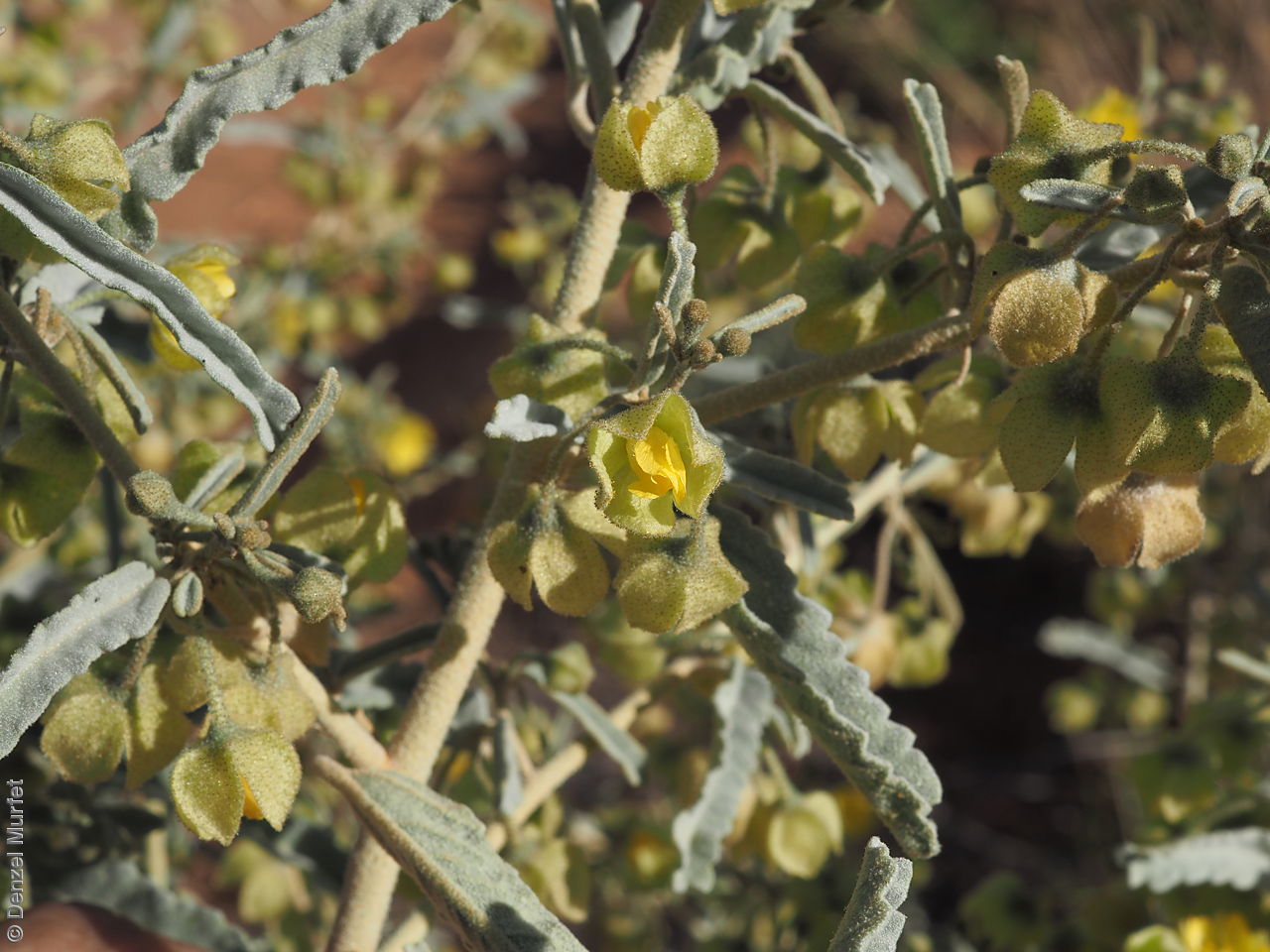
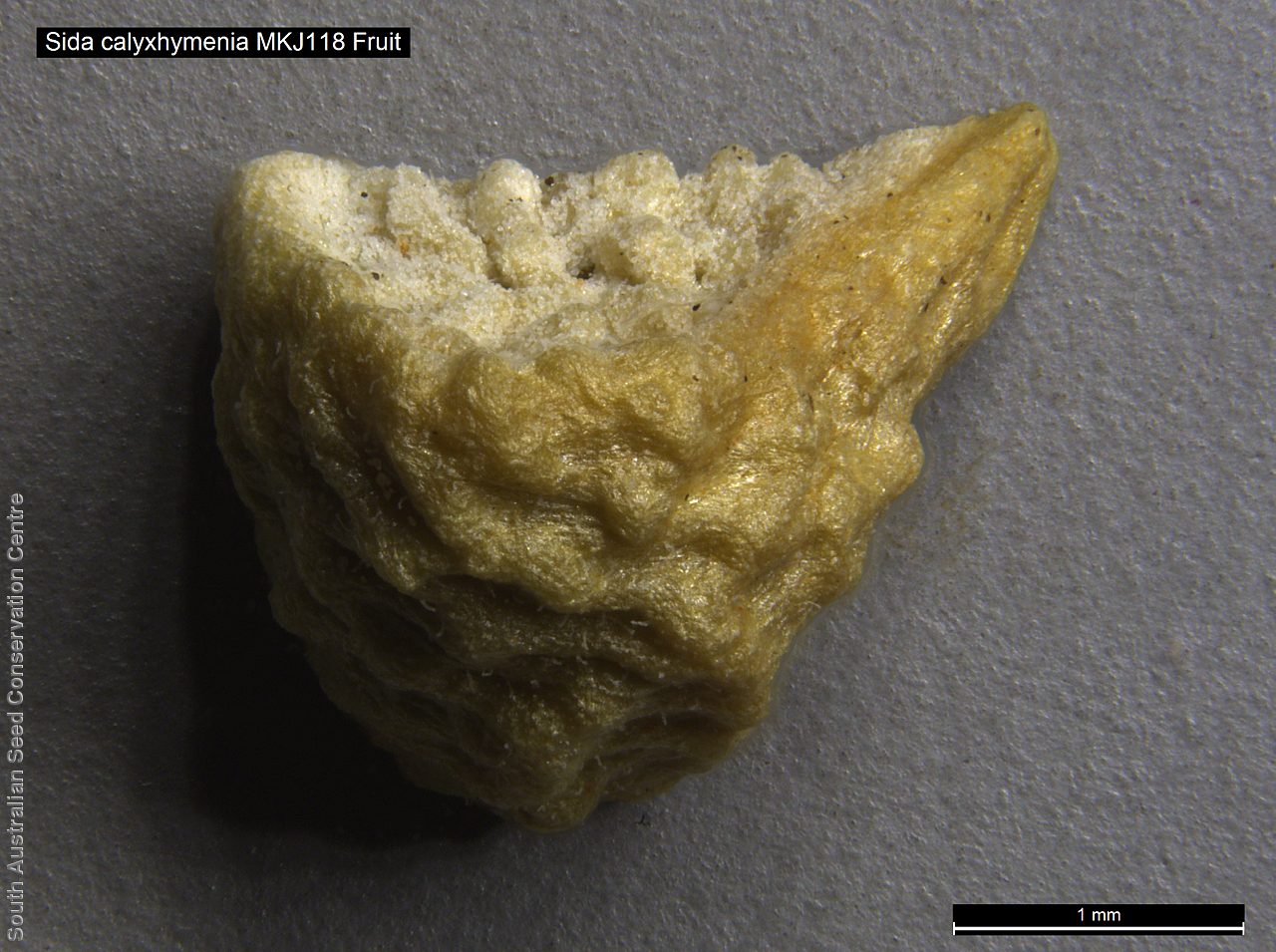
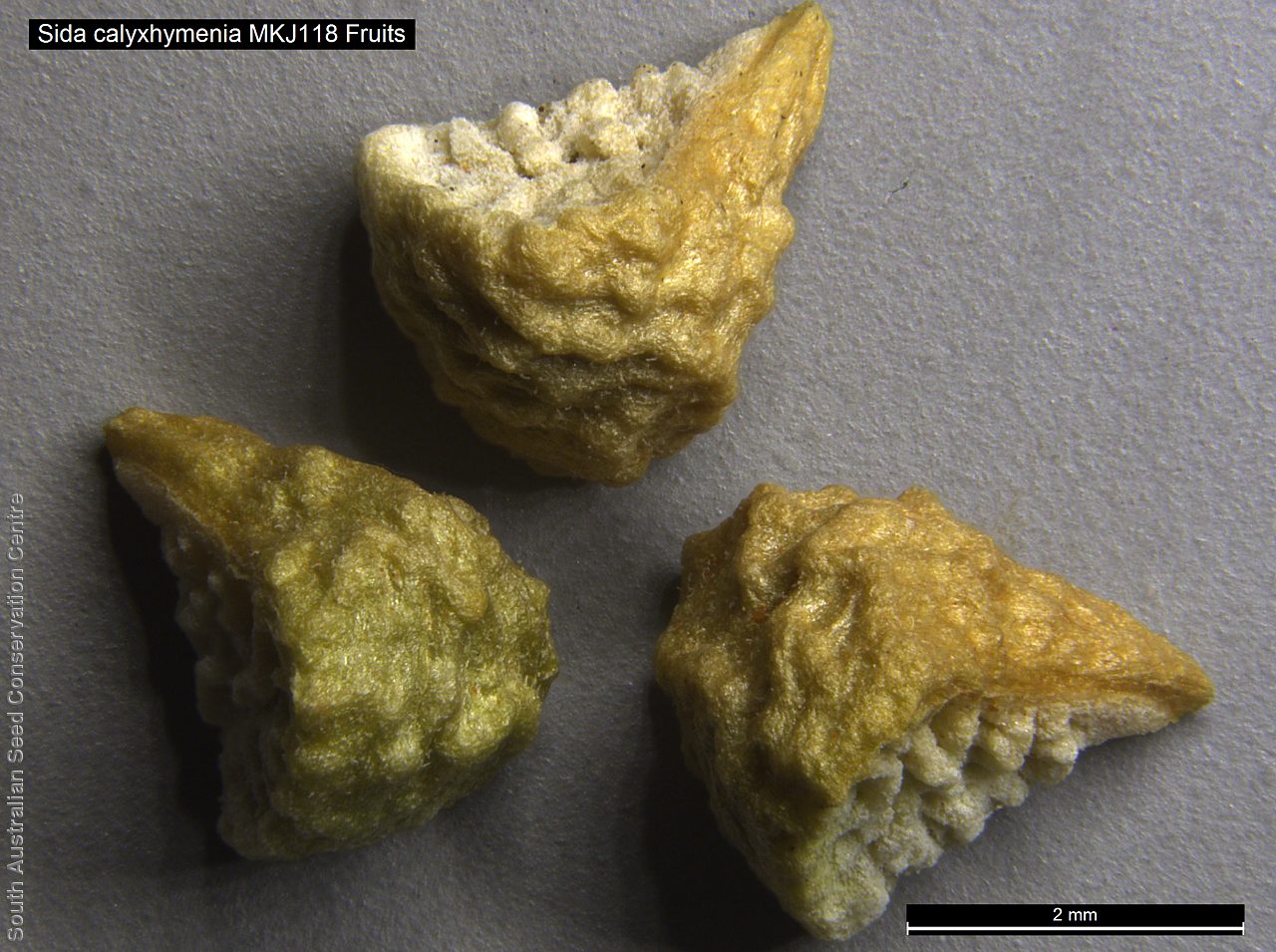
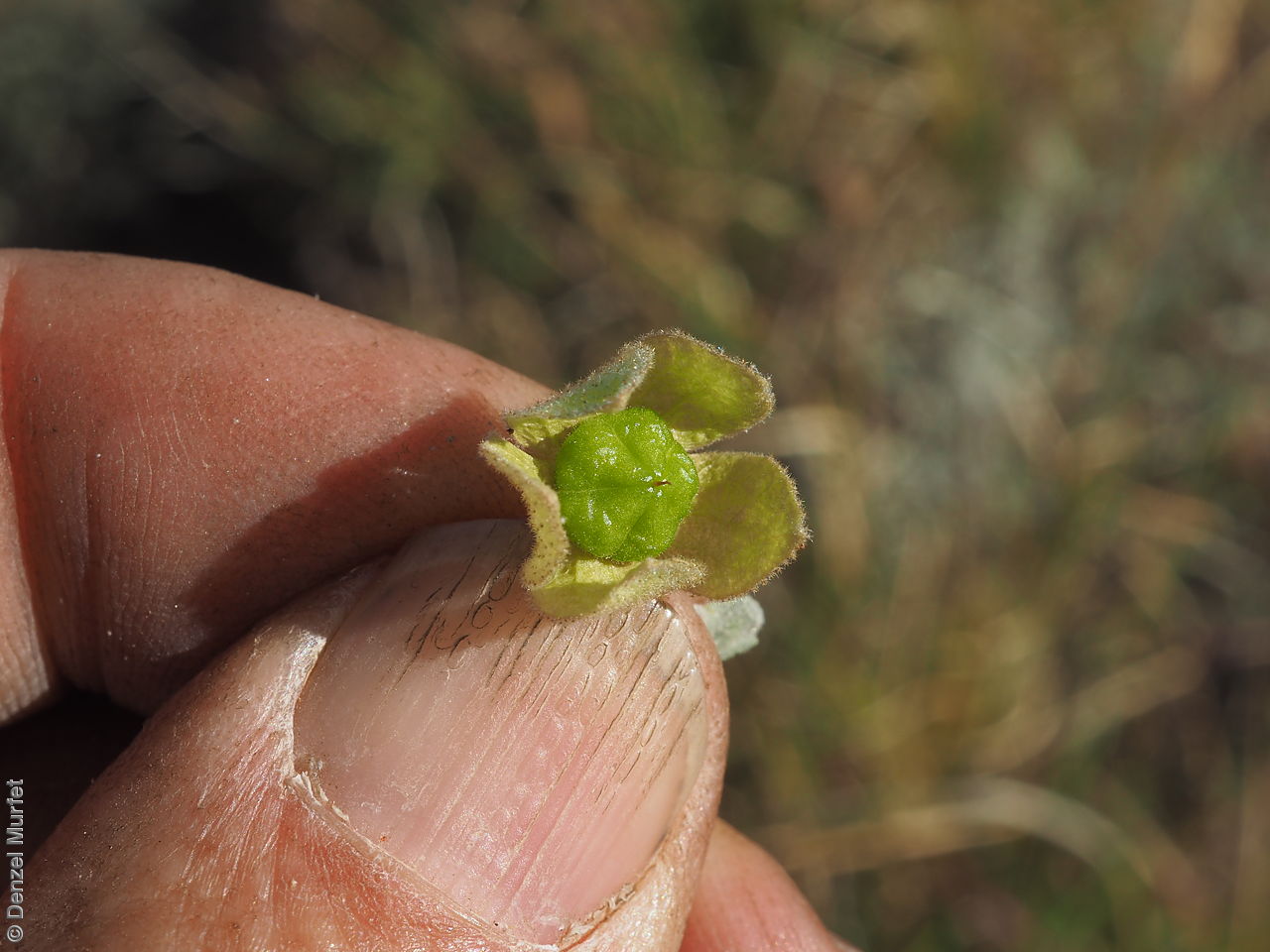

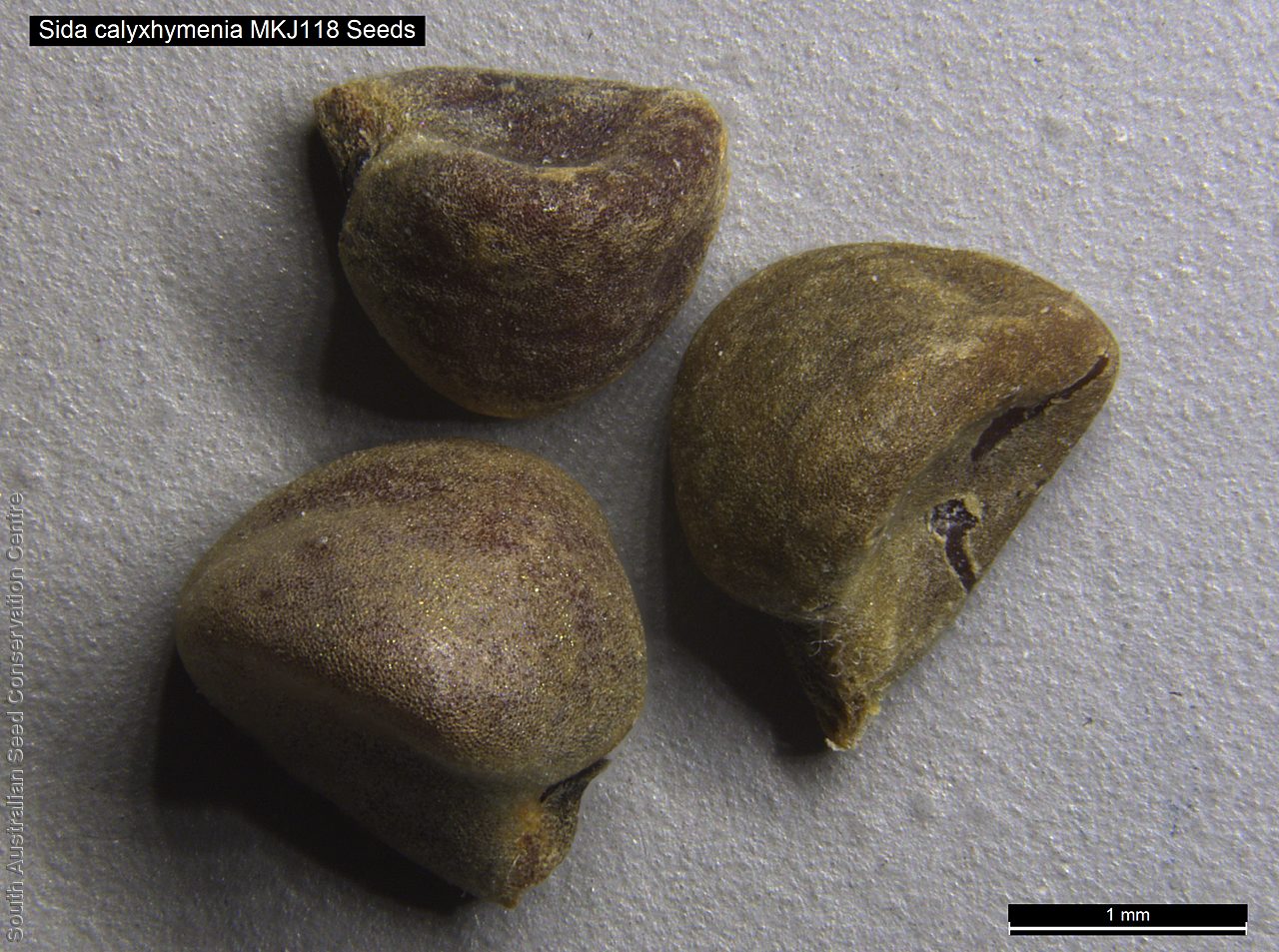


Botanical art
Common names
Tall Sida
Rock Sida
Etymology
Sida a Greek name used by Theophrastus for a water-lily, probably in reference to Nymphaea alba or for a pomegranate tree. Linnaeus transferred the name to Malvaceae changing its primary, pre-Linnaean application. Calyxhymenia from the Greek 'kalyx' meaning calyx and 'hymen' meaning membrane (which is named after Hymenis the Greek god of marriage); referring to its broad calyx (sepals).
Distribution and status
Found in the central and north-western parts of South Australia, growing on rocky outcrops, creek beds and rocky hills. Also found in Western Australia and the Northern Territory. Native. Common in South Australia. Uncommon in the Northern Territory. Common in Western Australia.
Herbarium regions: North Western, Lake Eyre, Nullarbor, Gairdner-Torrens, Eyre Peninsula
NRM regions: Alinytjara Wilurara, Eyre Peninsula, South Australian Arid Lands
AVH map: SA distribution map (external link)
Plant description
Erect perennial shrub to 2 m high, with fine hairy branches, greyish often tinged yellowish in appearance. Leaves linear-oblong or lanceolate to oblong, to 100 mm long and 15 mm wide, margin entire or with fine serration, hairy. Inflorescence solitary or in axillary or terminal clusters of 2-6 yellow flowers with broad membranous sepals below. Flowering between April and October. Fruits are brown conical 5 segmented fruit to 5 mm long, with a wrinkled surface and surfaced by the enlarge sepals. Seeds are dark brown wedge-shaped seed to 2 mm long and 1 mm wide. Seed embryo type is folded.
Seed collection and propagation
Collect seeds between July and December. Collect mature fruits, those that are turning pale straw colour and contain dark hard seeds. Place the capsules in a tray and leave to dry for two weeks. Then rub the capsules gently with a rubber bung or by hand to dislodge the seeds. Use a sieve to separate the unwanted material. Store the seeds with a desiccant such as dried silica beads or dry rice, in an air tight container in a cool and dry place. From one collection, the seed viability was low, at 30%. This species has physical dormancy that needs to be overcome for the seed to germinate (e.g. nicking or softening the seed coat).
| Location | No. of seeds (weight grams) | Number of plants | Date collected | Collection number Collection location | Date stored | % Viability | Storage temperature |
|---|---|---|---|---|---|---|---|
| BGA MSB | 3,400 (13.72 g) 3,400 (13.72 g) | 9-Nov-2005 | MKJ118 Gairdner-Torrens | 7-Aug-2006 | 30% | -18°C |
Number of plants: This is the number of plants from which the seeds were collected.
Collection location: The Herbarium of South Australia's region name.
% Viability: Percentage of filled healthy seeds determined by a cut test or x-ray.